Average sizes and life expectancy for this breed:
The Samoyed’s loyalty and desire for human companionship possibly come from their close connection with the Samoyede people. These tribes originally bred and raised these dogs thousands of years ago on the Taimyr Peninsula of Siberia. Back then, Samoyed dogs pulled sleds, hunted game, herded reindeer, and protected the Samoyede against any threats, including predators. These dogs also lived with their people, played with their children, and helped to keep them warm in the harsh cold climate.
The reputation of the Samoyed breed as smart and affectionate is well-earned. They frequently choose to adore one particular person in a home. However, they are still loving with everyone in their pack. They are at their happiest when they are with their families. These dogs enjoy participating in all activities inside the household as well as regular walks in the countryside.
The Samoyed is famous for its smile, known as the ‘Sammy smile’. This is the small but visible, upturned corners of their mouths. This dog breed is content and cheerful with a glass-half-full attitude towards life and the people they live with.
See available puppies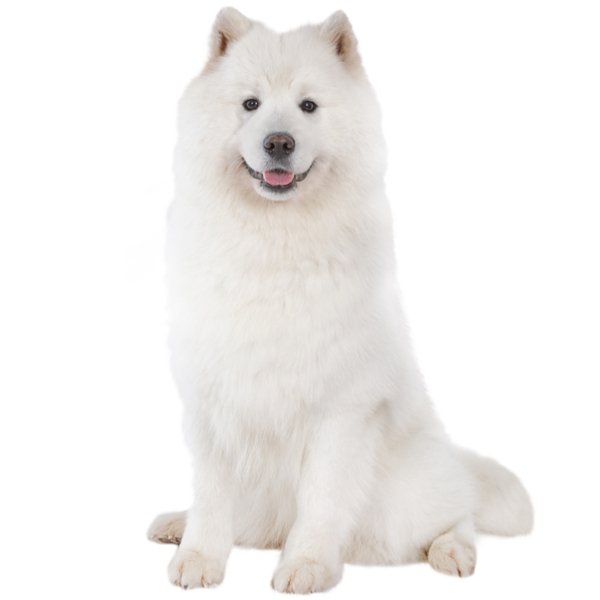

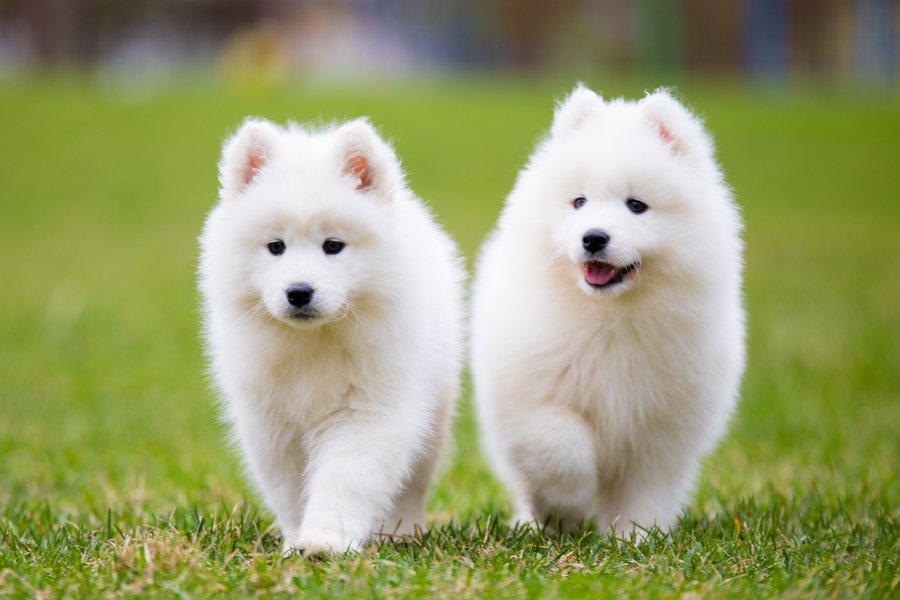


The Samoyed is an ancient dog breed. They were used by Nomadic tribes in Siberia to herd reindeer and pull sleds. Originally, these dogs were of various colours, but their sparkling white has since occupied most areas worldwide. The Soviet Nenet Herding Laika, also known as the Reindeer Spitz, may be the real ancestor of the Samoyed dogs we know and love today. Their white colouring is thought to come from a self-domesticated breed known as the ‘Bjelkier, which means ‘white dog that breeds white’.
During the 17th and 18th centuries, Russian explorers started travelling in Siberia, where they saw how useful the “Bjelkier” was as a working dog. At the same time, they noticed the beauty of these energetic dogs. The Czar of Russia took an interest in this breed, and they were even offered to European royals and nobles. After some time, the “Bjelkier” was awarded ‘Royal Status’.
Samoyed dogs finally made their way to England in the late 1800s. Earnest Kilburn-Scott founded the first UK Samoyed Breed Club in 1909. He is also considered to be a big influencer in the popularity of the breed from then onwards. In fact, he initially brought a Samoyed puppy back to England as a present for his wife, after he conducted an expedition in the Archangle. Around the same time, Samoyed dogs became beloved working canines for Arctic and Antarctic expeditions, particularly "Etah", who guided and directed Roald Amundsen's first trip to the South Pole. Over the years, more explorers brought their dogs back home, where they became loved as devoted human companions.
The first Samoyed dog to be shown in its own classification, rather than a foreign class, was in 1912. At this time, the dog breed was still known as a Samoyede. However, the ‘e’ was dropped in 1923.
Many Samoyed dogs still work today, herding reindeer and pulling sleds. They also remain one of the most popular dog breeds in the United Kingdom and around the globe because of their endearing smiles, gleaming white coats, expressive eyes, and lovable characters.
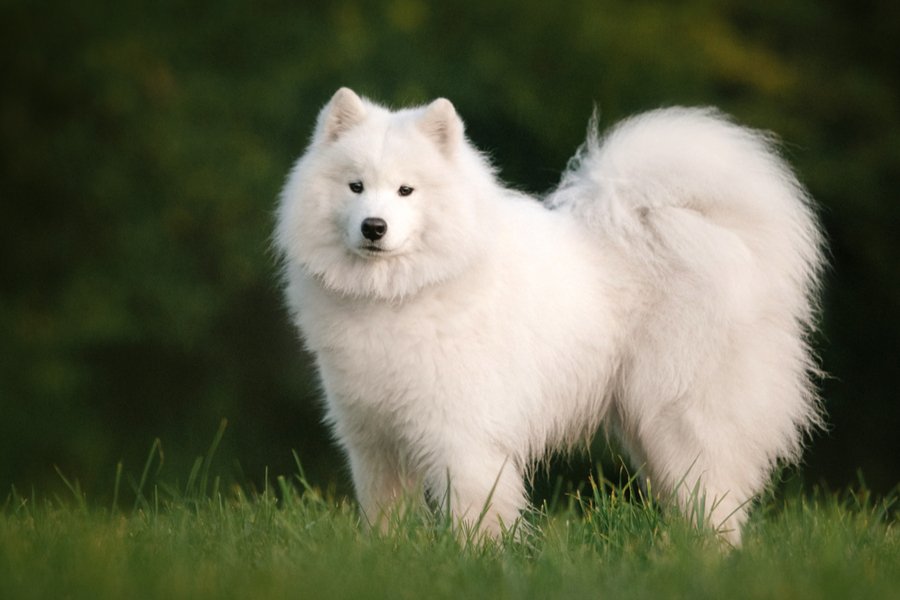
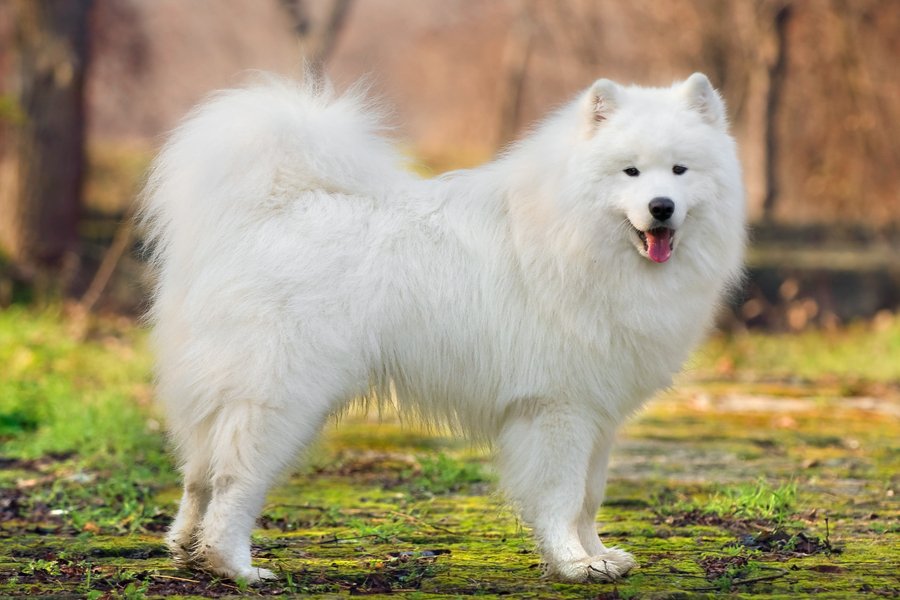
Samoyeds are beautiful dogs, boasting dark almond-shaped eyes and sparkling white coats. Their long, heavily feathered tails curl over their backs, which showcases the endearing, happy gait these dogs are known for. These adorable canines are also famed for their unique smiley faces, known as the ‘Sammy smile’.
Their wedge-shaped heads are powerful, broad, and flat between the ears. Their muzzles are moderately long, and they have black lips that highlight their smiley appearance. Their noses are also generally black but can be brown or flesh-coloured. Samoyeds have medium to dark brown eyes that are set well apart, with black rims. These dogs boast alert, eager, and intelligent expressions.
Samoyed’s ears are fairly rounded at the tips and set well apart on the head, with hair mostly covering the insides. Adult Samoyeds hold their ears upright. These dogs have strong jaws with a perfect scissor bite. Their muscular necks are carried arched and portray a stature of strength and grace
These active dogs have well laid-back shoulders. They also have straight, muscular front legs that display a good amount of boning. Their moderately long backs are well-muscled and broad. Their loins are extremely powerful. Samoyeds have deep chests and well-sprung ribs. Their back legs are muscular, whereas the soles of their feet are covered with hair and well-cushioned to protect them from the harsh cold climate in which they originated.
A Samoyed’s coat is thick and lush. These dogs have close-lying, soft, short undercoats, with a coarser outercoat that should stand away from the body. This topcoat is highly water resistant and should be straight, never curly.
Samoyeds are mostly white in colour. However, biscuit & white, and cream are also accepted under the UK breed standard. The outer coat is often silver-tipped.
A well-bred Samoyed is a clever, calm, gentle, and devoted canine companion. They are very welcoming and loving with all of their family members, including children. These dogs love to be involved in every household activity. They are known to be very vocal but luckily this can be controlled somewhat with training.
Samoyeds are not "lone wolf" kinds of dogs. They love to have a close connection with those they live with. These dogs cannot be left alone for long periods because they can suffer from separation anxiety. They also become bored very quickly due to their high intelligence and intense exercise needs. Their faithfulness and watchfulness can make them good watchdogs, but they do tend to be affectionate with everyone, including strangers. So, they may not be the best choice!
Due to their high intelligence combined with their very independent streak, Samoyeds can be a little challenging to train. These active dogs need to know their place in the pack to be truly happy, obedient, and well-balanced individuals. Because of this, Samoyeds are not ideal for first-time dog owners because they can quickly take the role of alpha and take control of the home. These dogs are definitely more suited to experienced owners who know how to train them correctly and who can remain consistent.
Furthermore, these working dogs need plenty of exercise to keep them happy. Samoyeds enjoy long walks because they have a lot of stamina. They are also incredibly playful so make sure you entertain them with regular play sessions in the garden and games to keep them physically and mentally in tip-top condition. As an additional note, make sure your back garden is fully secure, as a bored Samoyed is a very good escape artist!
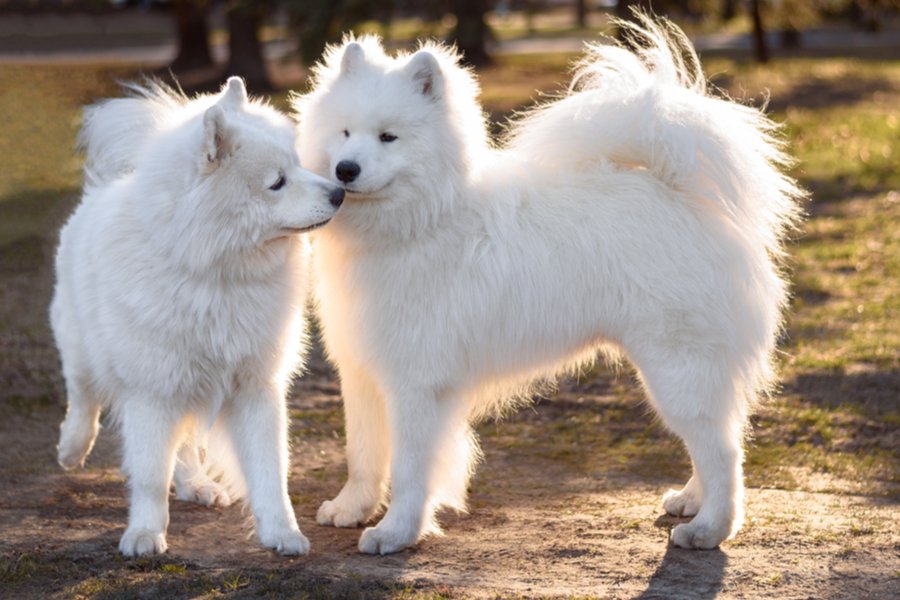
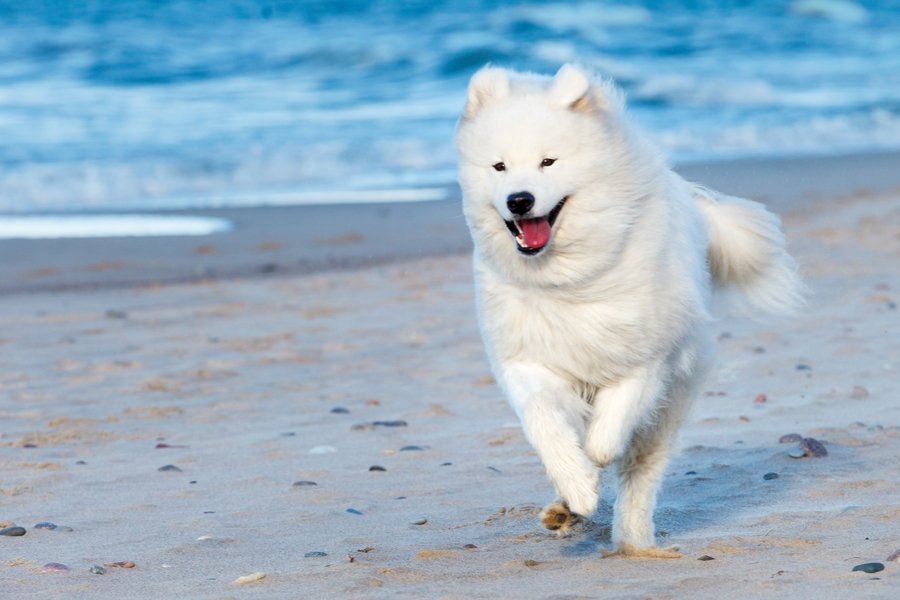
Like all dog breeds, Samoyeds need early socialisation. Expose them to various people, experiences, sights, and sounds when they're young to ensure that your puppy grows up to be a well-mannered and well-rounded dog.
Enrolling your Samoyed in a puppy class is a good start. Inviting visitors over often and taking them to busy dog parks, stores that permit dogs, and on leisurely strolls to see and meet neighbours will also help them to refine their social skills.
It’s worth noting that training needs to be continuous throughout a dog's life. Don’t hesitate to ask for help from a qualified trainer or dog behaviourist if there's an issue you are struggling with. Consistent training will reward you with a Samoyed that is adored and loved by everyone they meet! Remember that training should always be firm but fun with a Samoyed. Positive reinforcement training works very well with these dogs – just make sure you give commands with plenty of enthusiasm to keep their attention on you and don’t forget to offer treats or fuss as rewards.
Samoyeds are intense shedders. So, they require regular grooming to keep their coats looking their best. Daily brushing is ideal; however, you can get away with brushing a Samoyed once every two days when needed. Because of their dense double coats, dirt, dust, and debris can easily get trapped in the fur, which causes mats and tangles. Frequent brushing is a vital part of a Samoyed’s care, especially during the peak shedding seasons twice a year.
While it is possible to groom a Samoyed at home, many owners prefer to enlist the expertise of a professional groomer to ensure the coat is brushed and cleaned thoroughly.
For their dental health, brush their teeth at least two or three times a week to eliminate tartar buildup and bacteria. Daily brushing is best to avoid gum disease and bad breath.
If your dog doesn’t wear their nails down naturally, you can trim them once a month or so to avoid painful tears and other health problems. Remember that their toenails have blood vessels in them, so if you cut too deep, they can bleed. It is best to ask a veterinarian or groomer for advice if you are not experienced in nail trimming.
Their ears must be checked weekly for redness, swelling, or a foul odour because these can indicate an infection. When you check their ears, wipe them out with a cotton ball dampened with a vet-approved, gentle, pH-balanced ear cleaner to help stop ear infections. Never insert anything directly into the ear canal as this can cause damage to the inner ear.
As you groom your Samoyed, check for rashes, sores, or any other signs of infection such as inflammation, redness, or tenderness on the skin. In particular, you will want to pay close attention to their noses, mouths, feet, and eyes. Their eyes must be clear, with no discharge or redness. Your meticulous weekly exam will help you to identify any potential health problems early on.
Lastly, make their grooming sessions a positive experience full of rewards and praise. By doing this, you will lay the foundation for easy vet exams and other services when your puppy becomes an adult.
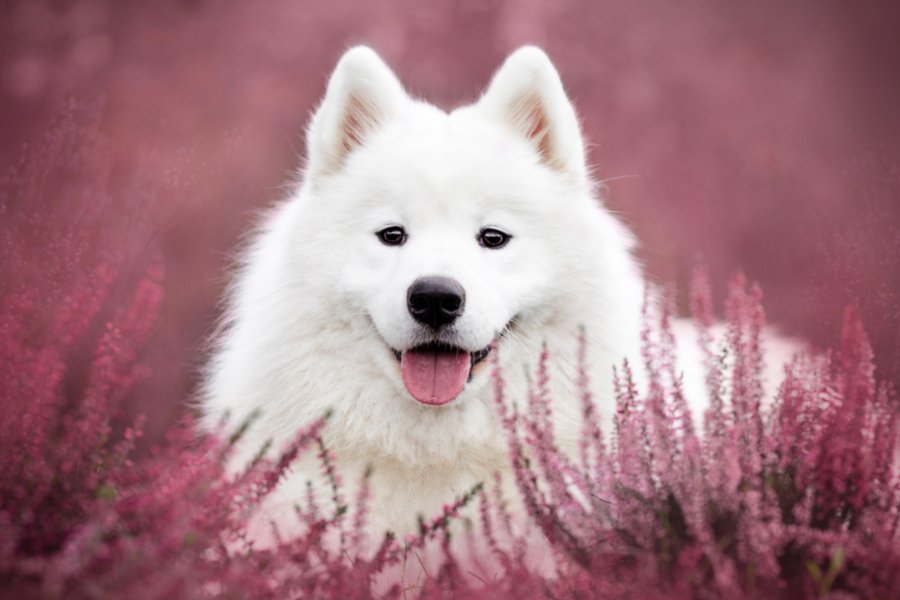
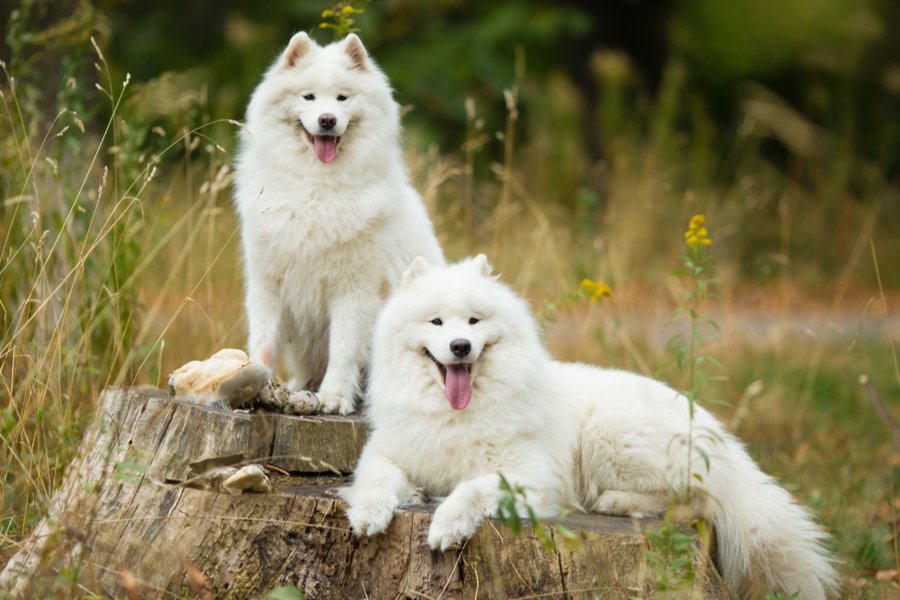
Samoyeds are a relatively healthy dog breed. Their life expectancy is 12-14 years with proper care, exercise, and a high-quality diet. However, there are certain health conditions that Samoyeds might be prone to. Make sure you only purchase a Samoyed puppy from a reputable and licensed breeder. They will be able to perform DNA checks to ensure there are no underlying health conditions, as well as make sure your new puppy has been appropriately socialised and weaned.
Some of the health conditions seen in Samoyed dogs include:
Samoyeds are deeply attached to their family members, including children. A correctly socialised Samoyed will revel in the love, attention, and company of children, as long as the kids are taught how to treat a dog with respect and care. Due to the size and strength of Samoyed dogs, they can easily knock over a small child by accident. So, supervision is always recommended. These dogs are generally best suited to families with older children as they can be a bit too boisterous for toddlers. They have even been known to herd small children around the house.
Samoyeds generally get along well with other dogs, as long as they have been introduced from a young age and with care. However, Samoyeds are hunting and herding dogs, so they may not be the best choice of canine for families with cats or other small animals.
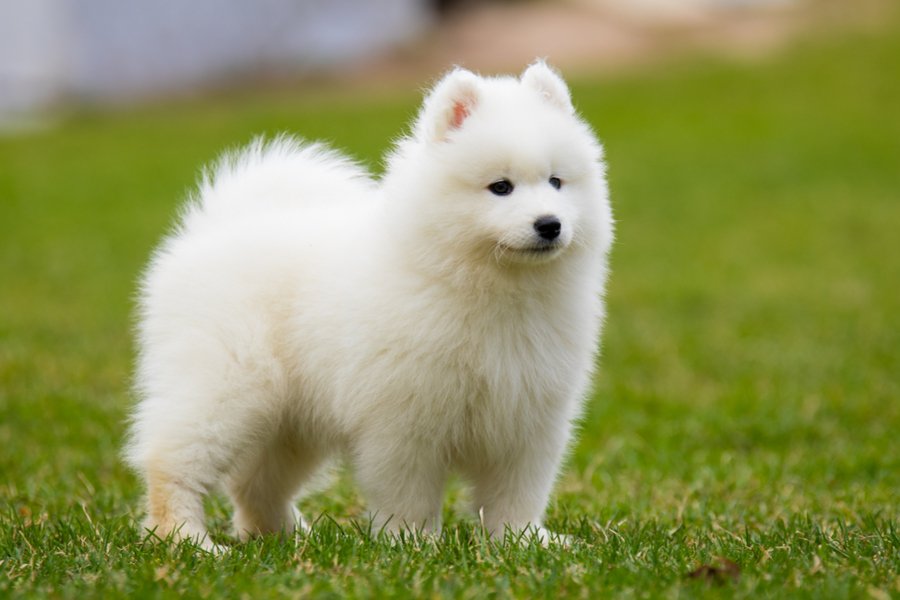
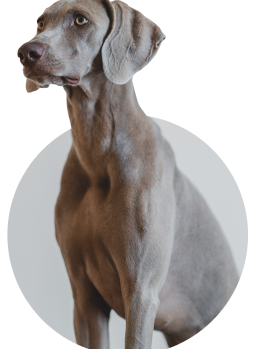
We can connect you with Breeders that are specialized in this particular breed.
See available puppies

Need some advice?
Whether you're a first time pet owner, an experienced pet owner, a new or long-time breeder, or just curious about pets, we've got you covered!
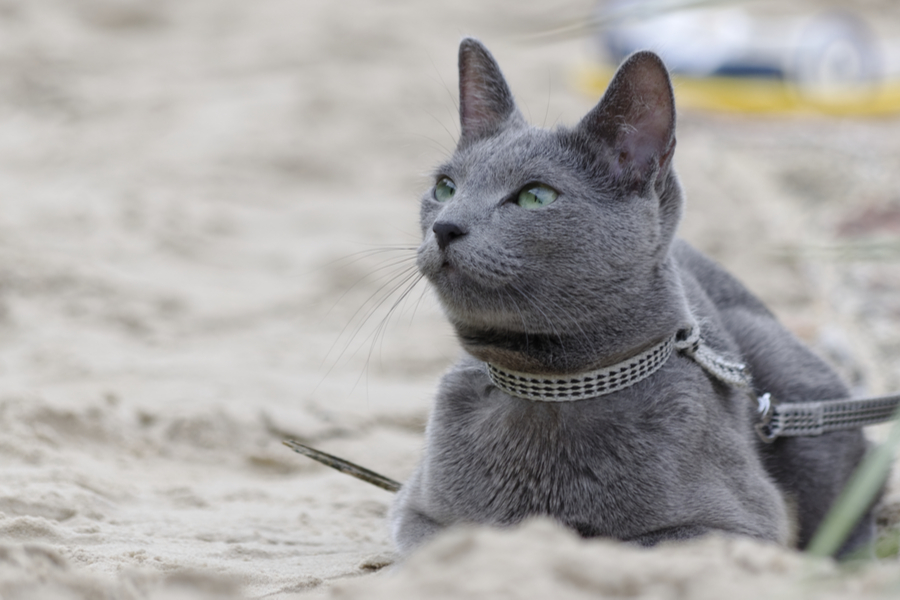
January 17, 2024
What Is The Personality Of Russian Blue Cats?
Russian Blue cats are most known for their distinctive shimmery blue-silver coat and piercing green eyes. However, this breed’s calm and gentle temperament is what makes them shine the most in the feline world.
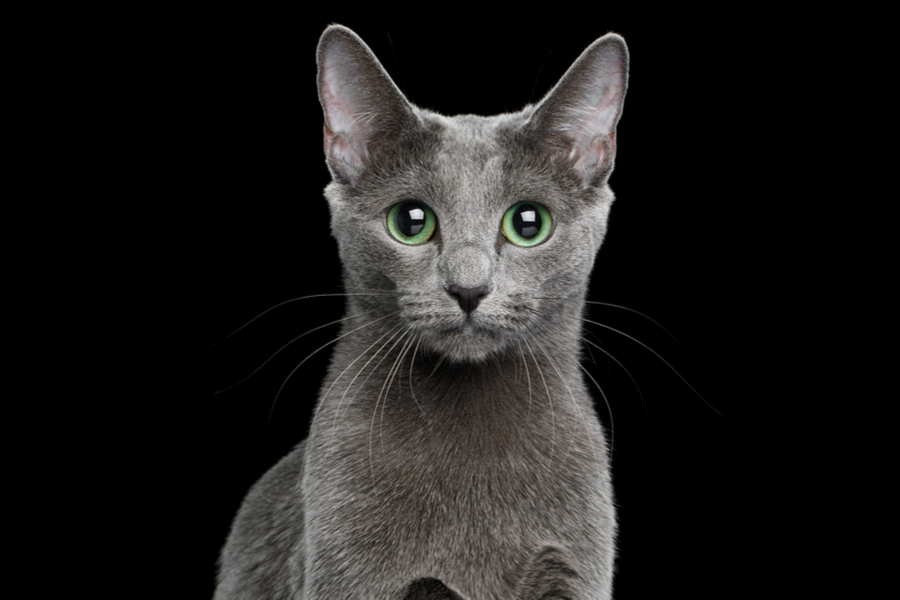
January 17, 2024
10 Facts About Russian Blue Cat Breed
Russian Blues are one of the most aesthetically stunning cat breeds, with a gorgeous plush silvery coat and vibrant green eyes. However, it’s not only their appearance that is beautiful; their nature is too.

January 17, 2024
How To Choose The Right Cat Breed for You
Cats can make the most fantastic animal companions; they are adorable, friendly, and loving. However, not all felines are created equal. There are many different breeds, of which each has its unique personality traits.
Need some help?
Contact us to speak to our friendly advisor, who will gladly help you find your dream pet!



We are registered in England and Wales under registration number 12568840,
and our registered office is at 58-60 Kensington Church Street, W8 4DB London, England.
© 2023 The Pedigree Paws